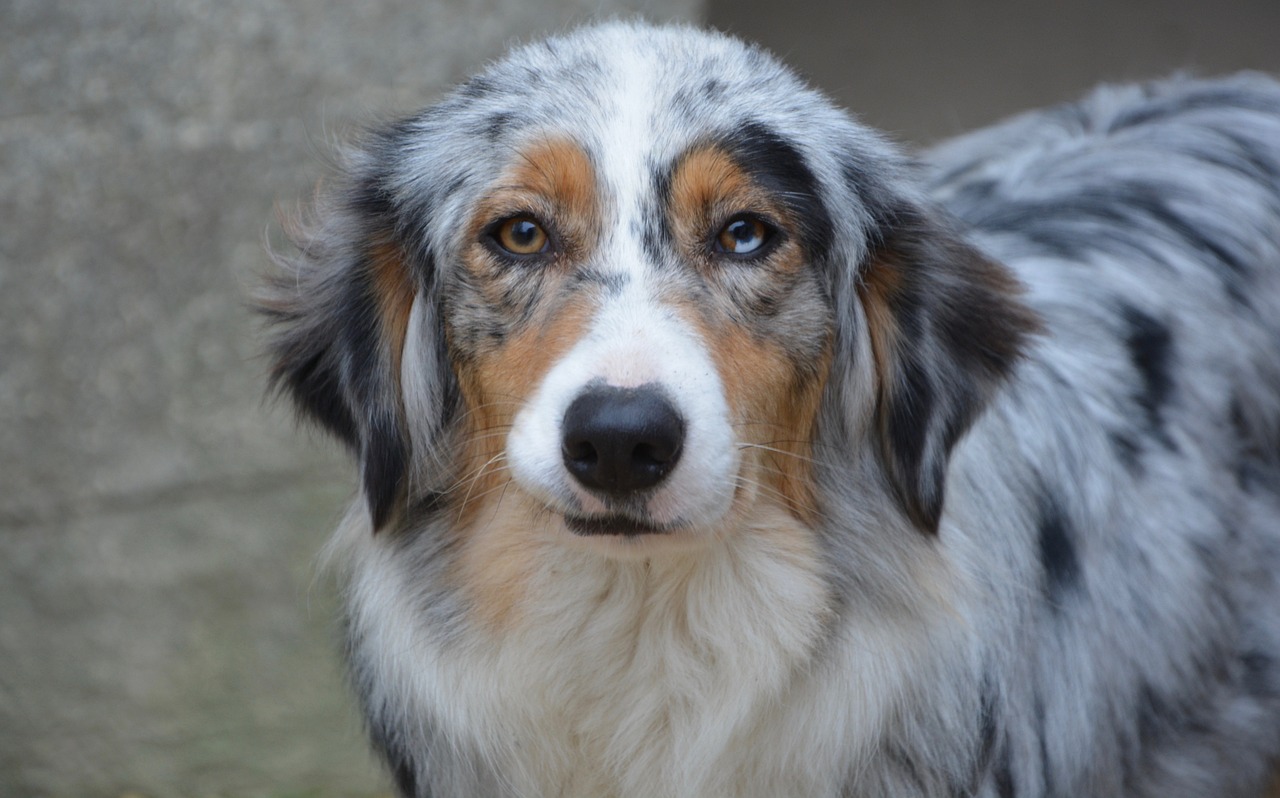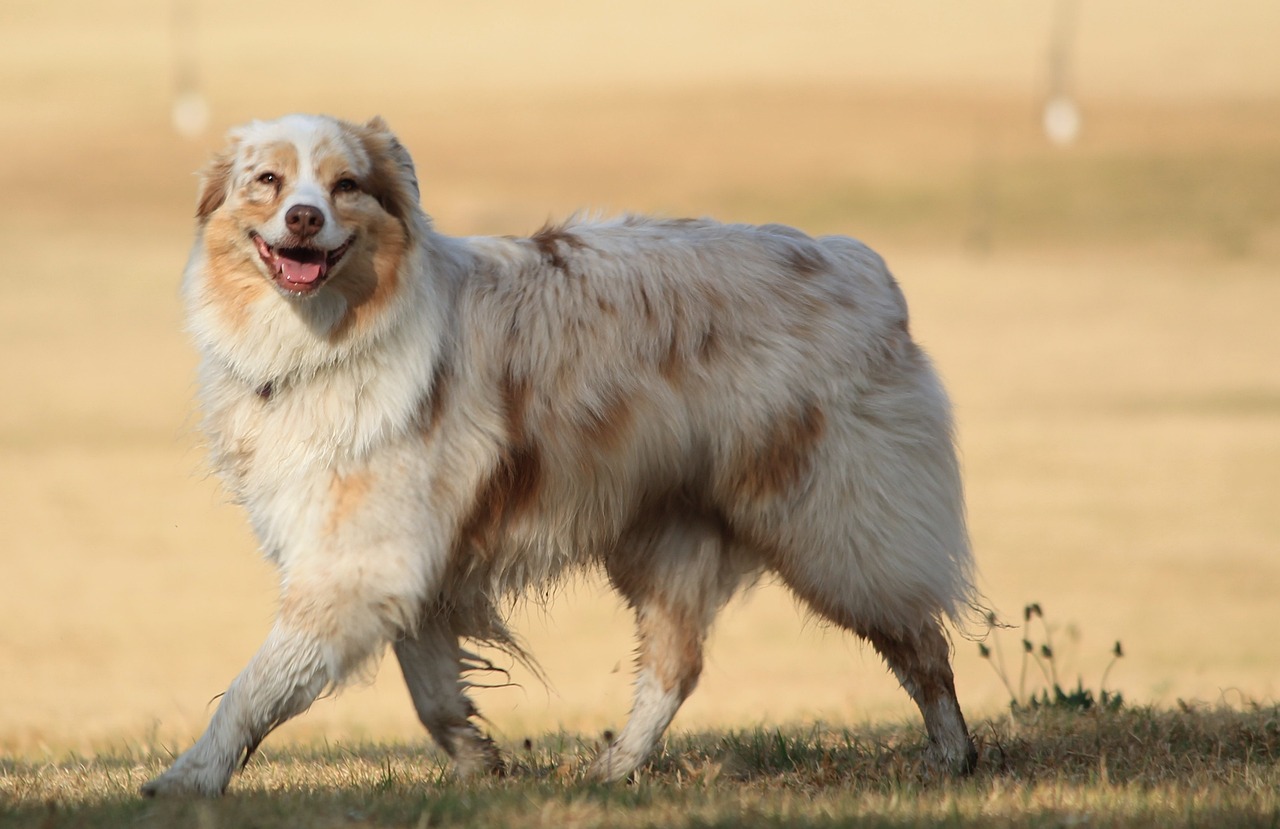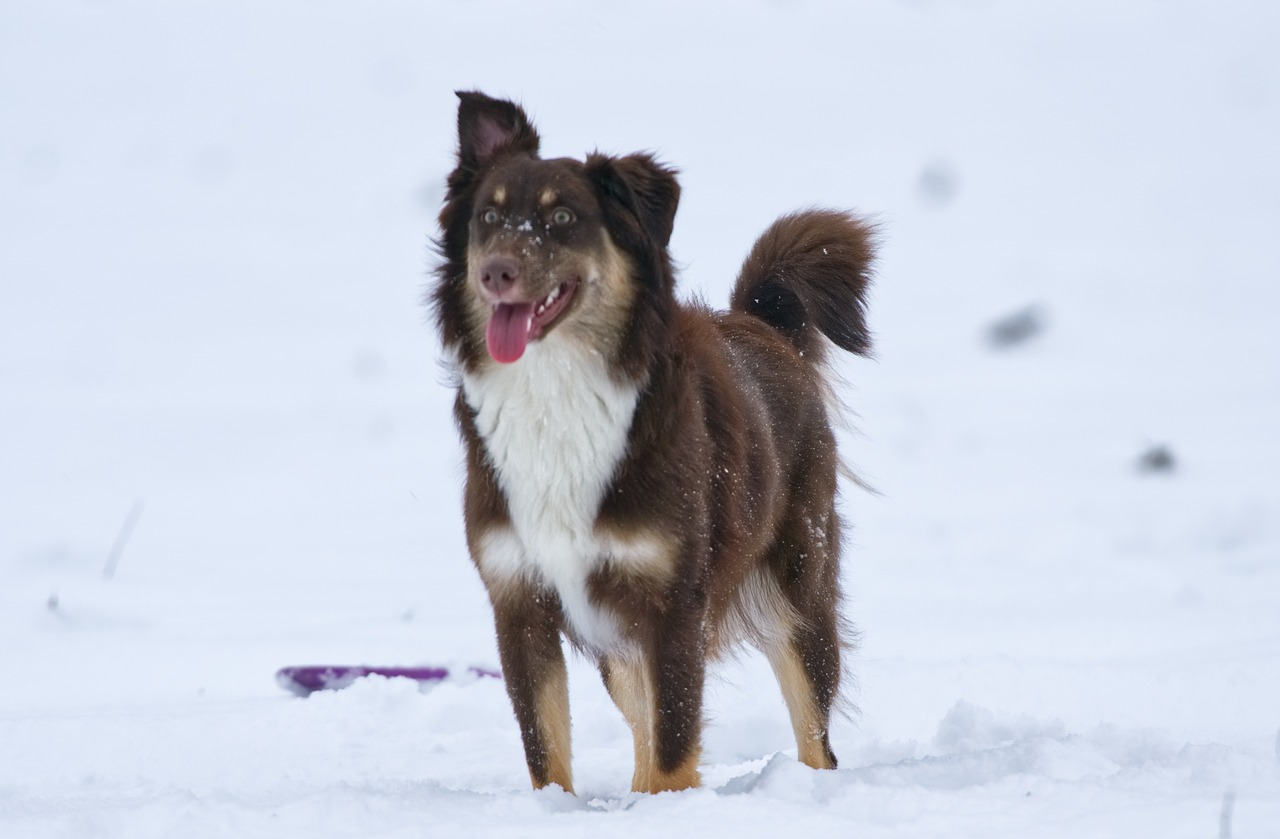Australian Shepherds, affectionately known as Aussies, are a breed renowned not only for their intelligence and versatility but also for their strikingly beautiful coat colors. Originally bred for herding livestock, their agility and trainability have made them a favorite among ranchers and dog sport enthusiasts alike. The breed’s eye-catching coat comes in a variety of colors and patterns that are not just visually appealing but also quite unique to the breed. From the classic blue merle to the rare dilute colors, each variation carries with it a specific genetic background that contributes to the breed’s diversity. This article will explore seven stunning coat color variations of the Australian Shepherd, illustrating the range of colors and the breed’s dynamic visual appeal.
1. Blue Merle

Blue Merle is one of the most iconic colors of the Australian Shepherd. This pattern features a marbling of gray, black, and white in the coat, with the possibility of tan points on the face, legs, and chest. The blue merle Australian Shepherd often has striking blue eyes or heterochromia—two different colored eyes—adding to their enchanting appearance. Each blue merle Aussie is unique, with no two patterns being exactly alike. This color is not only beautiful but also highly sought after in the show ring for its eye-catching aesthetics.
2. Red Merle

Red Merle Australian Shepherds have a coat that combines shades of red, cream, and white, creating a mesmerizing and vibrant look. Like their blue merle counterparts, red merles can also display a range of patterns and may have lighter or darker patches. Their eye color can vary widely from blue to amber or even green, often with marbling or flecks. Red merles are particularly stunning in the sunlight, as their coats can appear almost luminous.
3. Black

Black Australian Shepherds are solid in color but may have white markings on the chest, face, and legs, and sometimes copper or tan points. Despite the simplicity of the color, a black Aussie carries a striking presence due to its glossy coat and powerful physique. The depth of the black coat can vary, from a deep jet black to a softer black mingled with lighter hairs, typically seen in the undercoat.
4. Red

Red, or liver, Australian Shepherds are a rich, solid color that can range from a light cinnamon to a dark liver hue. They may also sport white markings and tan points, similar to their black counterparts. Red Aussies carry a warm, earthy tone that makes them stand out. The red coloration is less common than black but is equally striking and capable of performing just as well in working and show environments.
5. Black Tri

The black tri Australian Shepherd is a color combination of black, white, and tan. This tri-color pattern is one of the most common among Australian Shepherds. The black covers most of the body while white is usually seen on the chest, face, legs, and sometimes the neck. Tan markings are typically found on the cheeks, above the eyes, and on the legs. The precise placement of the tan can vary significantly from one dog to another, making each black tri-Aussie distinctive.
6. Red Tri

Red tri Australian Shepherds have a base of red, complemented by white and tan markings. This variation mirrors the pattern seen in black tris but with red replacing the black. Red tris are admired for their stunning contrast and depth of color, with the red providing a vivid backdrop for the white and tan markings. The red tri coloration can range from a bright, fiery red to a darker, more subdued shade.
7. Blue

While not as common, blue Australian Shepherds have a diluted black coat that appears as a dark charcoal or smoky gray. This color can sometimes be mistaken for a lighter black but has a distinct silvery tone. Often, blue Aussies will also have white markings and may have tan points, similar to the black and red tri-color patterns.
In conclusion, the Australian Shepherd is a breed that not only impresses with its intelligence and agility but also captivates with its diverse range of coat colors. Each color variation brings its own unique beauty to the breed, making the Aussie not just a versatile working dog but also a stunning companion. Whether herding on a ranch or competing in agility, their colors make them stand out in any crowd, embodying both function and form in their vibrant coats.
 Toledo, United States.
Toledo, United States.